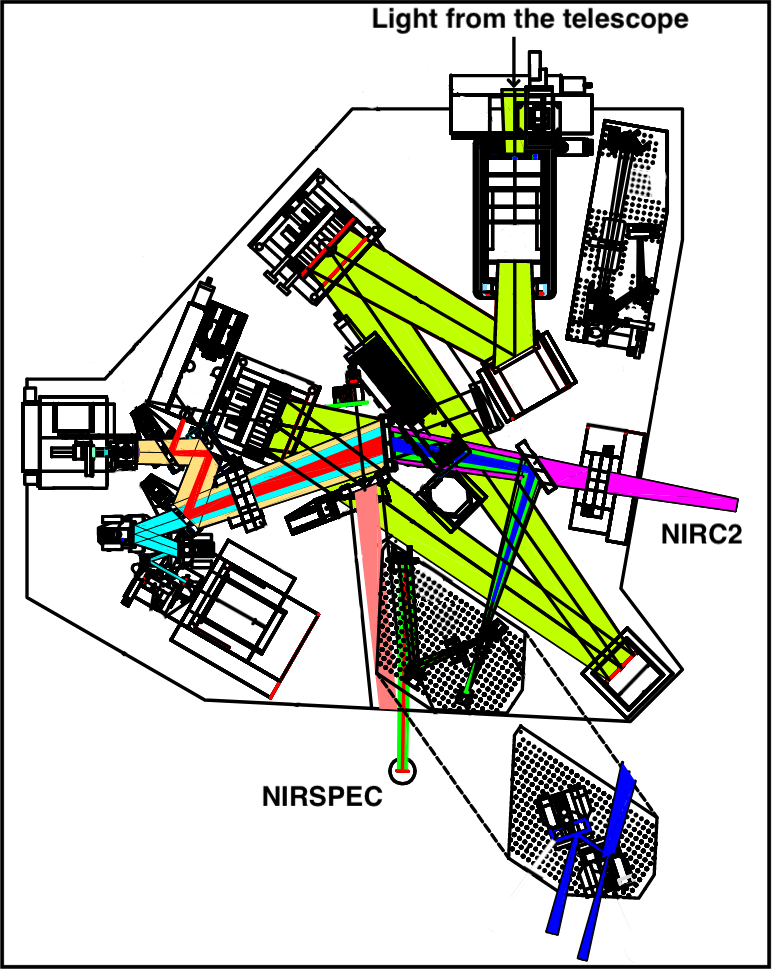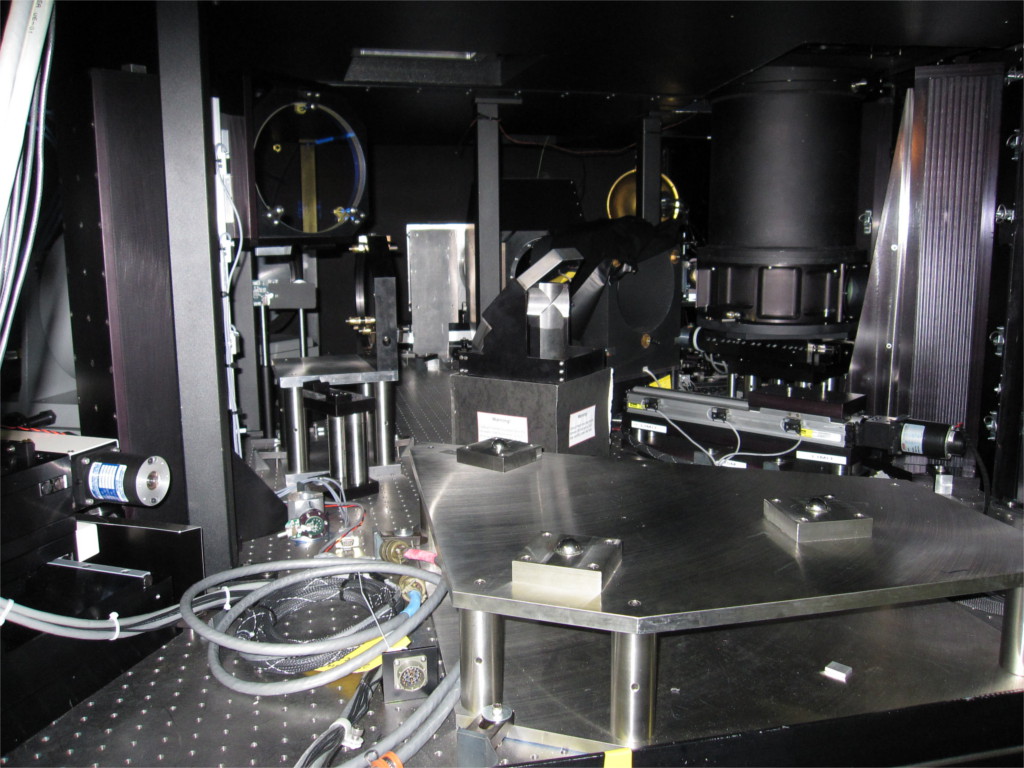
K2AO bench optical path in the early 2000's. The orange beam corresponds to the dual star module, no longer available. The PyWFS is currently located between the calibration unit and NIRC2. |

Picture of K2AO bench with the side panels open, with the NIRSPAO plate without its optics on the foreground. |